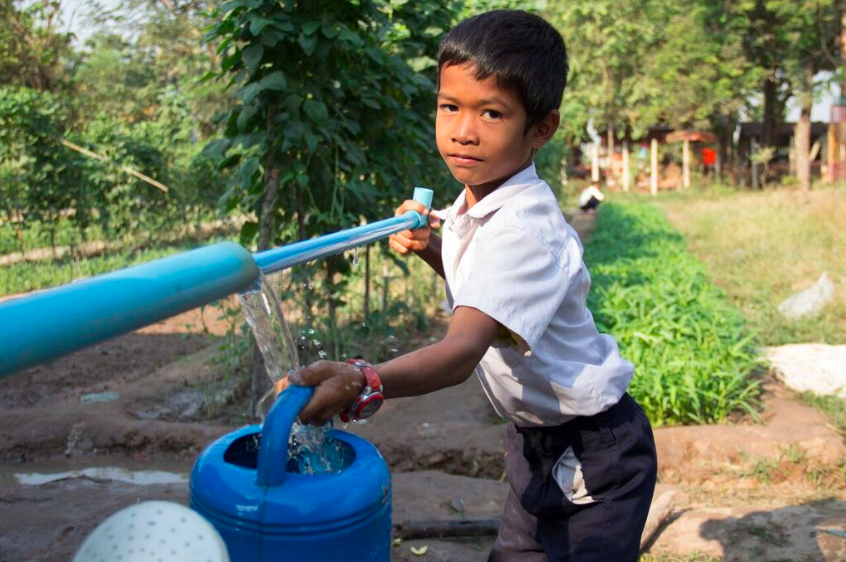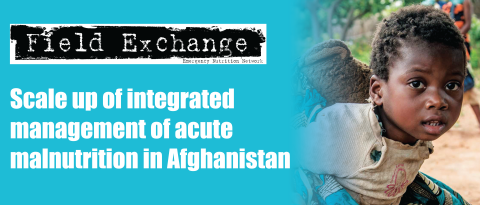WASH-nutrition barriers and potential solutions in Cambodia
Summary of research1
Location: Cambodia
What we know: Low coverage of improved water, sanitation and hygiene (WASH) is recognised as an important contributor to the burden of undernutrition in Cambodia.
What this article adds: A recent study investigated barriers to WASH and nutrition integration in Cambodia and identified opportunities to address them. Barriers included lack of technical guidance on integration, siloed governance and funding mechanisms, limited knowledge among personnel outside specialities, donor-driven programme design and lack of clear leadership. There is a risk that efforts to promote WASH-nutrition integration remain theoretical without moving to implementation. Stakeholders described several successful implementation strategies for integrated programmes. Cross-sector steering architecture is essential. Recommendations are made to address barriers and support routine implementation of integrated work.
Globally, it is estimated that half of the burden of child undernutrition is attributable to poor sanitation and hygiene (Prüss-Üstün and Corvalán, 2006). However, many water, sanitation and hygiene (WASH) programmes do not recognise their potential effect on nutrition, while many nutrition initiatives do not include WASH. In Cambodia nutrition and WASH outcomes remain poor by regional standards. One third (32 per cent) of children under five years old are stunted and one quarter (24 per cent) are underweight, while 43 per cent of the population do not have access to improved sanitation and 35 per cent use a non-improved source of drinking water during the dry season (Cambodia DHS, 2014). Low coverage of improved WASH is recognised as an important contributor to the burden of undernutrition in Cambodia (RESULTS UK, 2014) and integrated programming is an emerging priority for both government and development partners.
The purpose of this research was to support future efforts to integrate WASH and nutrition in Cambodia by considering what barriers currently exist to integration and identifying opportunities to address and overcome them. A stakeholder consultation was conducted with key informants whose work relates to nutrition and/or WASH. Forty representatives from government agencies, development partners and civil society were interviewed, including national, provincial and district-level staff.
In terms of knowledge and learning, stakeholders reported a growing evidence base to support integration of WASH and nutrition and increased awareness of global and local evidence. Meetings, trainings and workshops provide forums for learning but are insufficient to foster progress towards integration, particularly at sub-national level. Specific technical guidance on integration is needed. Priorities identified included the appointment of focal points on WASH and nutrition and the generation of local evidence for linkages.

The policy environment is siloed. While there are some strategies that draw together policies across multiple sectors, there is no single policy that relates to both WASH and nutrition. A policy framework that is supportive of integration is needed, including a cross-sector strategy that outlines how existing WASH and nutrition policies contribute to integrated efforts to improve nutrition outcomes. This should be backed up by action plans, supportive institutional arrangements and funding.
Effective collaboration requires clear leadership, with mandated leadership responsibilities within existing institutions. Currently, roles and responsibilities are not clearly allocated across sectors or agencies. It is therefore unclear who is responsible for leading on specific aspects of WASH, nutrition, or WASH-nutrition integration. While individual leaders can work across siloed institutions, this is challenging and therefore institutional arrangements are needed that can connect silos. As a first priority, national leaders should provide clear leadership and guidance to sub-national agencies. Coordination mechanisms should also be strengthened, with the clear allocation of leadership roles and responsibilities and the buy-in of high-level leaders.
In terms of governance, vertical government implementation and funding structures for WASH and separate structures for nutrition are very well established. It is therefore often not feasible to coordinate integration at sub-national level. A national-level coordination mechanism is needed to negotiate an overarching strategy for integration and agree which ministries will take on which responsibilities. Opportunities should also be explored to strengthen existing mechanisms that support development partner alignment and consider how to streamline reporting for government and development partners.
Funding for nutrition and WASH is limited and there is concern that integration will increase competition for funds. This leads to territorialism about sector mandates and discourages participation in cross-sector work. Stakeholders also commented that public and donor funding is usually siloed, whereas merged funding enables integrated work. Advocacy is needed to the Ministry of Economy and Finance for increased budget allocations for both nutrition and WASH, as well as to donors for increased merged funding opportunities.
Lack of personnel was identified as a major constraint to integration. Many people have limited knowledge or interest in activities outside their sector. It may be effective to bring together multi-sector teams of people with deep technical expertise in one area, as well as to have institutionalised focal points, rather than champions who are more personality-driven. Stakeholders reported strong emotional responses to integration – including both fear of change and openness to change – which can be expected to influence the success of integration efforts. Working relationships across sectors (within and between organisations) must be cultivated and supported and integration must be promoted in ways that reassure people of their responsibilities and mitigate territorialism.
For programmes implemented by civil society, programme design is driven by the priorities of the donor, which often relate to achieving pre-determined outputs rather than focusing on the achievement of broader outcomes. Stakeholders reported several suggestions for integrated design, including co-location; behaviour change campaigns that include both WASH and nutrition messages; changes to supply-side WASH programmes; and delivery through the private sector. An integrated theory of change or causal framework would support integrated programme design. As a priority, current evidence should be used, including locally generated evidence, during limited windows of opportunity in the design phase to ensure that programmes are as up-to-date as possible. There is a risk that efforts to promote WASH-nutrition integration remain theoretical without moving to implementation. Cross-sector steering architecture that is institutionalised rather than project-driven is essential to support routine implementation of integrated work. Stakeholders described several successful implementation strategies for integrated programmes, including a single contract, shared delivery platform and an integrated design that is implemented in a segmented way.
In terms of monitoring, evaluation and reporting, stakeholders are accountable to what they report on. This can discourage integration where reporting lines are siloed and the current institutional context promotes parallel, rather than joint, monitoring. Monitoring and evaluation provide an important opportunity to generate local evidence through special studies. An integrated theory of change or causal framework is needed that includes the contribution of WASH to nutrition.
Endnotes
1Burnet Institute (2016) Final report: Study on WASH-nutrition barriers and potential solutions. 10 August 2016.
References
Cambodia Demographic and Health Survey 2014. Phnom Penh, Cambodia: National Institute of Statistics, Ministry of Planning and Directorate General for Health, Ministry of Health, 2015.
Prüss-Üstün A, Corvalán C (2006). Preventing disease through healthy environments: Towards an estimate of the environmental burden of disease. Geneva: World Health Organization, 2006.
RESULTS UK. Undernutrition in the land of rice. London: RESULTS UK, 2014.


